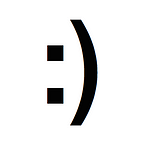That one free tool
Good morning!
I was walking to work with my wife and we got to talking about how to manage projects. She’s got a bunch of work to coordinate, and the short-term stuff often trumps the important, longer-term stuff — a situation that we’re all familiar with.
And the talk got to tools — should they use Trello? Or Basecamp? Or GitHub Issues? Maybe Slack will help! Again, a conversation we’ve all had at least once, probably many times. But the thing is, the tool is not the solution. Basecamp will not soothe your itchy boss. Trello will not force you to act on your priorities.
That one free tool will not save you.
Now, I’ve got no problem with tools. In a newsroom, the AP stylebook is a very useful tool. Nobody likes every choice the AP has made (Rainforest is spelled “rain forest”? Fuck that!) but the stylebook creates parameters in which you work. The rules force you down a path, and that path eliminates a thousand little choices that you’d otherwise have to make, every day.
Every tool forces you down a path. But is it the path you should be on? We’ve all had that moment, when you recognize that you’ve got a problem, and you look to the world for tools to solve it. But how do you know how to choose? Maybe you choose the one that your friend likes. Or the one you just read about. Or maybe you choose the most expensive tool, because if it costs the most, it’s gotta be the best. [Insert rant about enterprise software procurement.]
My advice is this: Before you select a tool, you must first intimately understand the problem you’re trying to solve. And the best way to do that, IMHO, is to do it by hand. It’s cool to research organizational systems (for example, I like using swim lanes to organize our long-term work: each column is a person, each row is a week) but don’t jump straight to software! Do it by hand. On a wall. With post-it notes, or 3x5 cards, or a spreadsheet. Start from scratch. Maybe use bits of string to connect things or stickers to denote statues and priorities. Every good system starts with a crafts project. Grab a glue stick and get to work!
Doing it by hand is inefficient, sure. But you *need* that inefficiency. You need to run into the walls, to find the boundaries within the system. To figure out all the weird things about your team and the organization in which you work. Doing it by hand is the only way you’re going to grok the problem.
Only then will you have enough knowledge and context to select the correct tool for your team. Or build a tool. (Oh christ, please don’t spend money building software unless you’ve done it by hand first.)
One more thing about that one free tool
We’re currently building a little free tool called The Carebot. And, oh boy, do people want to use it. “When will it be ready for me to use?” is the most common question we get.
But. If you’ve read this far you’ll probably know what I’m going to say. We did this stuff by hand for more than a year. We built a few little systems, sure, but we’ve spent a long time understanding the problem, and now we’re ready to make something for ourselves.
And I guarantee that your problems are different than ours. What is impact at your organization? What are your goals? What defines success? Maybe your goals and our goals will overlap, but Carebot will not solve your analytics problems any more than Google Analytics or Chartbeat. Because you probably don’t have *analytics* problems, you have *organizational* problems, caused by how you define and measure success. Or perhaps because you’ve never *bothered* to define success!
But if you have defined success, and measured it by hand, then your first question about Carebot won’t be “When will it be ready?” or “How does it work?” — your question will be “What does it measure, and why?”
Happy Wednesday.
